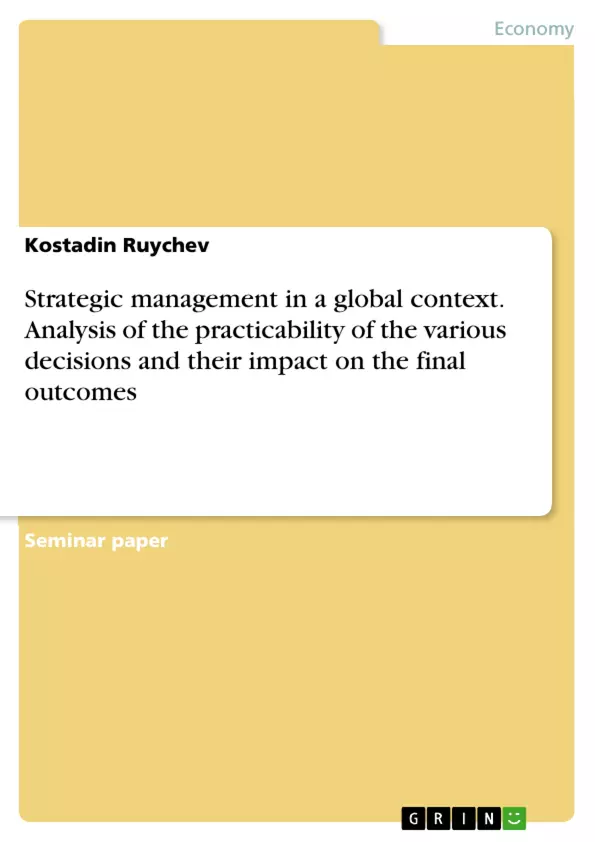This report is mainly concerned with the identification of the reasons standing behind the decision entries of the business strategy game. Critical focus is placed on how the combination of the various decisions put into practice impacted the final outcomes of the game. Data was provided for the period between year 11 and year 16.
Within the first four chapters of the report, the mission, vision, corporate objectives, situational and internal analysis were performed. By utilizing the Handy model of organizational culture and Belbin’s team roles this paper investigated the way decisions were taken within the course of the game. The role and implementation of the marketing strategy of the organization were examined in chapter 5 of the study, while the next two chapters referred to the performance analysis and corporate social responsibility of the company.
Inhaltsverzeichnis (Table of Contents)
- Executive summary
- Table of contents
- List of tables
- Mission, vision and values
- Mission
- Vision
- Values
- Corporate objectives
- Year-by-year evaluation
- Year 11
- Year 12
- Year 13
- Year 14
- Year 15
- Year 16
- Business environment analysis
- Macro-environment
- Meso-environment
- Micro-environment
- SWOT/Telescopic Observations
- Functional strategies
- Marketing
- Operations
- Supply chain and logistics
- Corporate social responsibility
- Finance
- Overall performance review against investor expectations
- Recommendations for future strategy
- References
- List of figures
Zielsetzung und Themenschwerpunkte (Objectives and Key Themes)
This report aims to analyze the strategic decision-making process within a business strategy game, examining the impact of various decisions on the final outcomes. The report focuses on the period between year 11 and year 16, providing a comprehensive review of the company's mission, vision, corporate objectives, internal and external analyses, marketing strategy, performance, and social responsibility. It further analyzes the consistency of team member decisions and the impact of these decisions on the game's results.
- Strategic decision-making in a business strategy game
- Analysis of the impact of various decisions on outcomes
- Internal and external environment analysis
- Evaluation of marketing strategies and performance
- Corporate social responsibility and its impact on decision-making
Zusammenfassung der Kapitel (Chapter Summaries)
The initial chapters delve into the company's mission, vision, and values, setting the foundation for the strategic analysis. Subsequent chapters then undertake an in-depth examination of the company's performance and decision-making processes, year-by-year, from year 11 to year 16. This includes an evaluation of the business environment, SWOT analysis, and a comprehensive review of functional strategies across marketing, operations, supply chain and logistics, corporate social responsibility, and finance.
Schlüsselwörter (Keywords)
The report centers on key strategic management concepts like mission, vision, values, corporate objectives, SWOT analysis, business environment analysis, marketing strategy, operational efficiency, supply chain management, corporate social responsibility, financial performance, and team decision-making. It further employs models such as Porter's Five Forces, Handy's model of organizational culture, and Belbin's team roles.
- Citation du texte
- Kostadin Ruychev (Auteur), 2020, Strategic management in a global context. Analysis of the practicability of the various decisions and their impact on the final outcomes, Munich, GRIN Verlag, https://www.grin.com/document/958026



